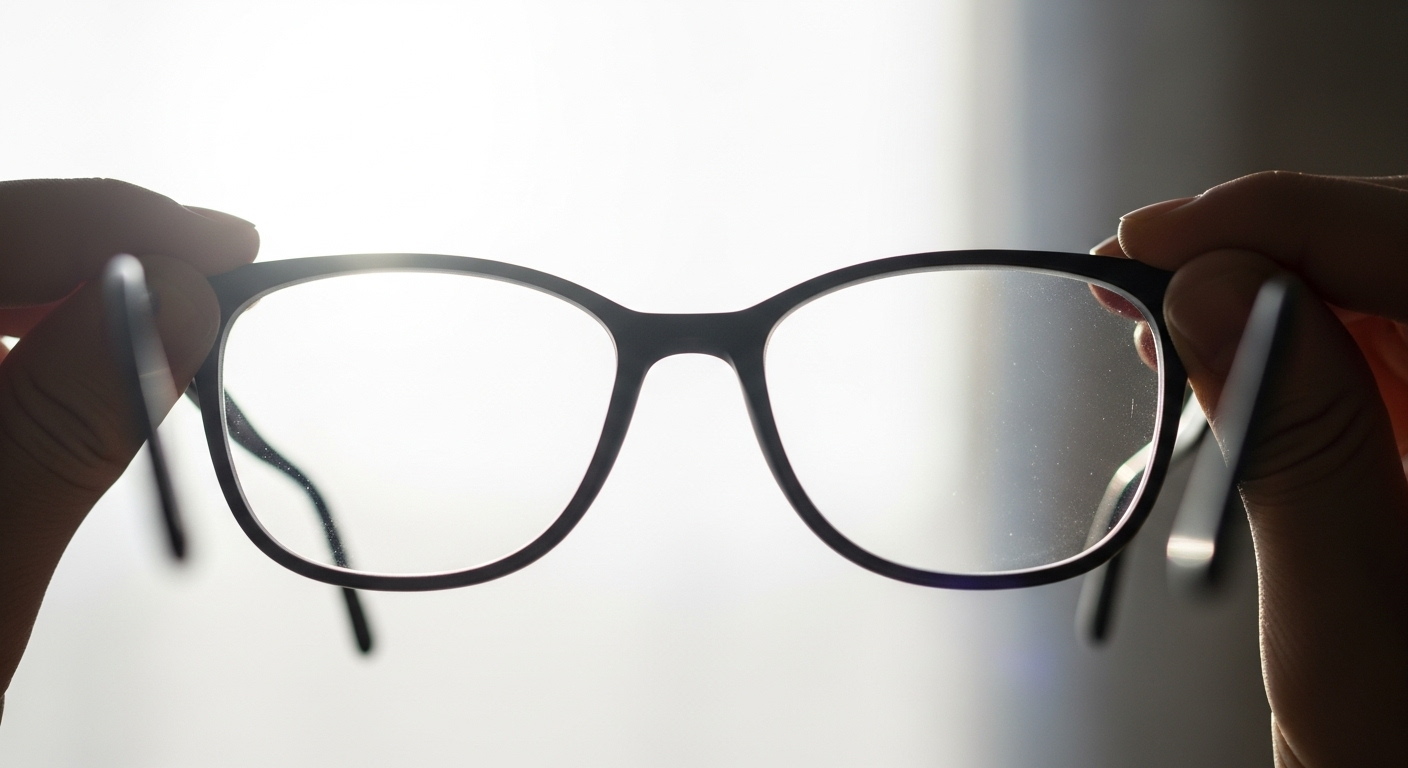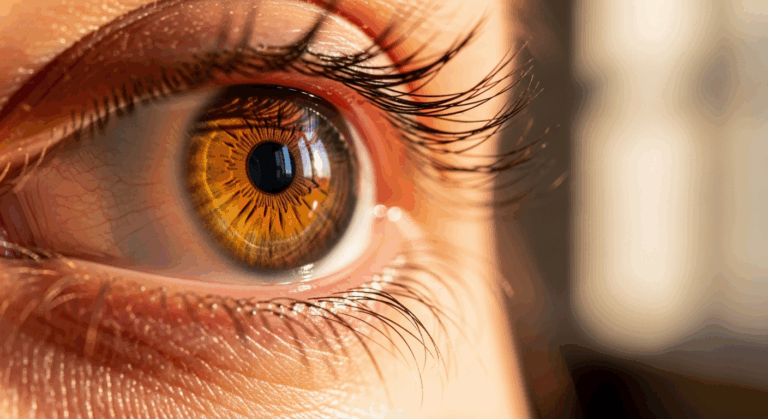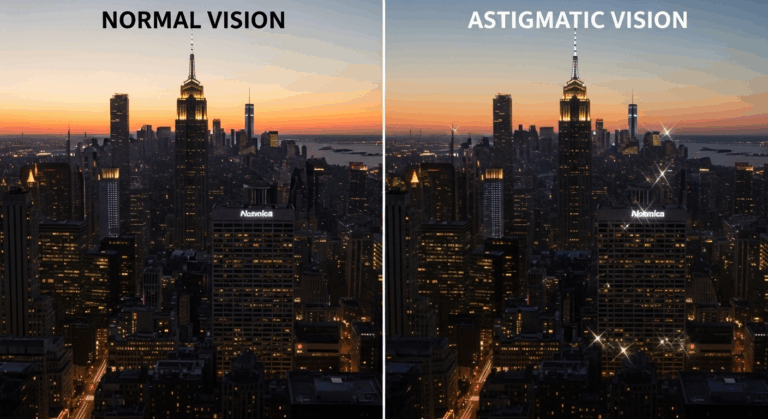If you wear glasses, you know the frustration: see-through one second, smudged the next. Cleaning your eyeglasses shouldn’t feel like a science experiment — but if you do it wrong, you can scratch lenses or ruin special coatings. In this guide I’ll walk you through the easy, safe way to clean eyeglasses, share common mistakes to avoid, and give expert tips we often pass along in the optical shop.
Think of your lenses like tiny car windshields: grit + rubbing = scratches. So our goal is to remove dirt and oils gently, rinse grit away first, then dry without abrasion.
Why proper eyeglass cleaning matters
It’s not just about clarity
Clean lenses improve vision, reduce eye strain, and help anti-glare coatings work properly. Dirty glasses make you squint — and squinting leads to headaches and tired eyes.
Coatings are delicate
Many lenses have anti-reflective, anti-scratch, anti-fog, or blue-light coatings. These coatings can be weakened by harsh chemicals or rough drying materials, so cleaning methods matter.
What you’ll need (simple and safe)
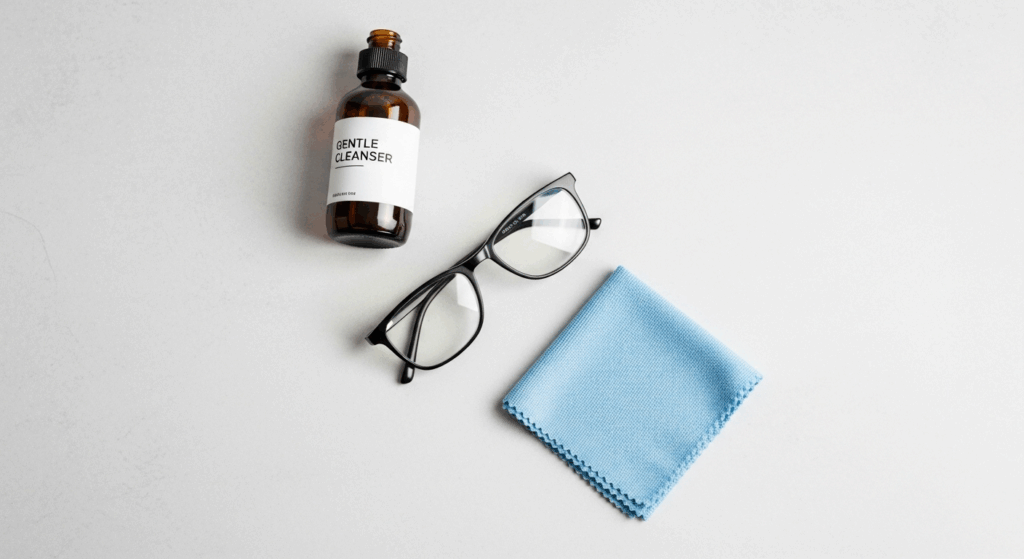
- Lukewarm tap water (not hot)
- A drop of mild, lotion-free dish soap (e.g., baby/dawn type)
- Microfiber lens cloth (not paper towel or tissues)
- Clean, soft towel or air-dry for initial drip drying
- Optional: lens cleaning spray or pre-moistened lens wipes made for eyeglasses
- Optional: cotton swab for nose pads and frame crevices
Keep it simple. Most of the time the soap + water + microfiber combo is all you need.
Step-by-step: how to clean eyeglasses (best method)

1. Wash your hands
Quick and easy — wash with soap, dry with a lint-free towel. You don’t want lotion or dirt from your hands on the lenses.
2. Rinse lenses under lukewarm water
Hold your glasses under a gentle stream to remove dust and debris. This prevents rubbing grit across the lens (the main cause of scratches).
3. Add a tiny drop of mild dish soap
Put one drop on each lens, or one drop on your fingertips and gently rub both sides of each lens and the whole frame (including nose pads and temples). Use gentle circular motions for 10–20 seconds.
4. Rinse well
Rinse all soap off under lukewarm water. Soap residue causes streaks if left to dry.
5. Shake off excess water
Gently flick the frames to remove most water, then let them drip briefly.
6. Dry with a microfiber cloth (or air dry)
Pat dry with a clean microfiber cloth. Don’t use paper towels, tissues, napkins, or your shirt — those fibers can scratch coatings.
7. Inspect and finish
Hold them up to the light. If you see smudges, use a microfiber cloth with a little lens cleaner or a clean microfiber dab to polish.
Quick clean for on-the-go (when you don’t have soap & water)
- Use pre-moistened lens wipes made for eyeglasses (single-use) or a small spray of lens cleaner plus a microfiber cloth.
- If you must, use a dry microfiber cloth to buff away fingerprints — but rubbing without removing grit first risks scratching. Give them a quick breath and then wipe; breath can help dissolve oils temporarily.
What to avoid — mistakes that damage lenses
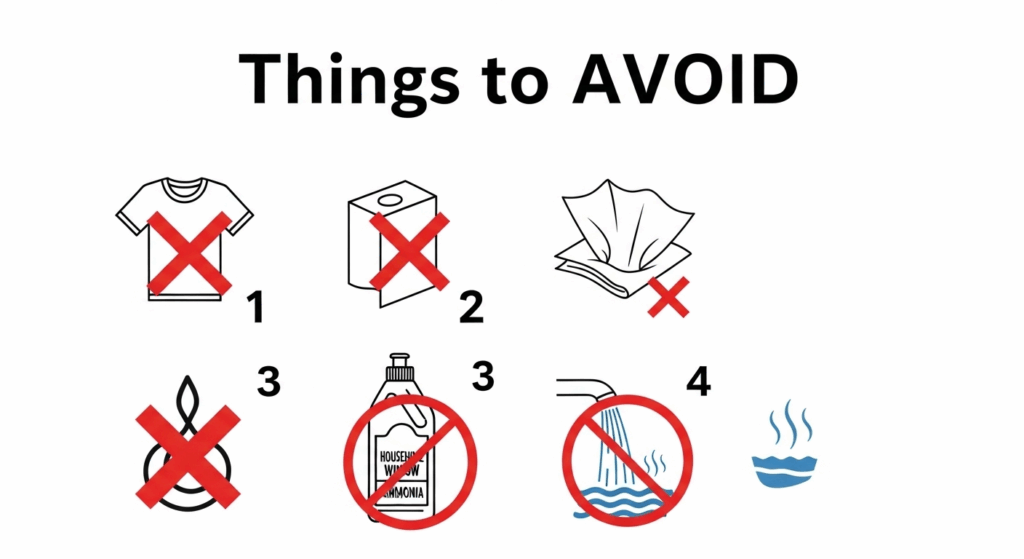
- Never use household glass/window cleaners, bleach, ammonia, or vinegar. These can strip or damage anti-reflective and other coatings.
- Don’t use paper towels or tissues. They’re abrasive at microscopic levels.
- Avoid hot water. High temperatures can warp frames and damage coatings.
- Don’t use your shirt. Funny as it is, cotton often contains grit and oils.
- Don’t store lenses face-down. Always put lenses face-up or in a case.
Remember: grit + pressure = scratches. Remove grit with water first.
Special cases: anti-reflective, photochromic, and coated lenses
Anti-reflective (AR) coatings
AR coatings improve night driving and reduce glare but can be more sensitive. Use mild soap and microfiber. Avoid alcohol or abrasive cleaners repeatedly — they can wear coatings over time.
Photochromic/sunlight-changing lenses
Clean them the same way as above. Avoid extreme heat (e.g., leaving glasses on a hot car dash) which can affect the photochromic molecules and the frame.
Polarized sunglasses
Same cleaning rules apply; polarization is an internal filter and doesn’t change with cleaning, but don’t use strong solvents.
Disinfecting your glasses (when you’re sick)
If you need to disinfect frames and lenses during cold/flu periods, proceed carefully:
- Use a 70% isopropyl alcohol wipe cautiously on frames and hard plastic parts.
- Many manufacturers say repeated alcohol exposure may degrade some lens coatings. If you disinfect lenses, use a damp microfiber cloth and a mild soap solution instead, or check your lens maker’s care instructions.
- When in doubt, ask your optician — they can tell you whether your lenses have alcohol-sensitive coatings.
Frames, nose pads and hinges — don’t forget these areas
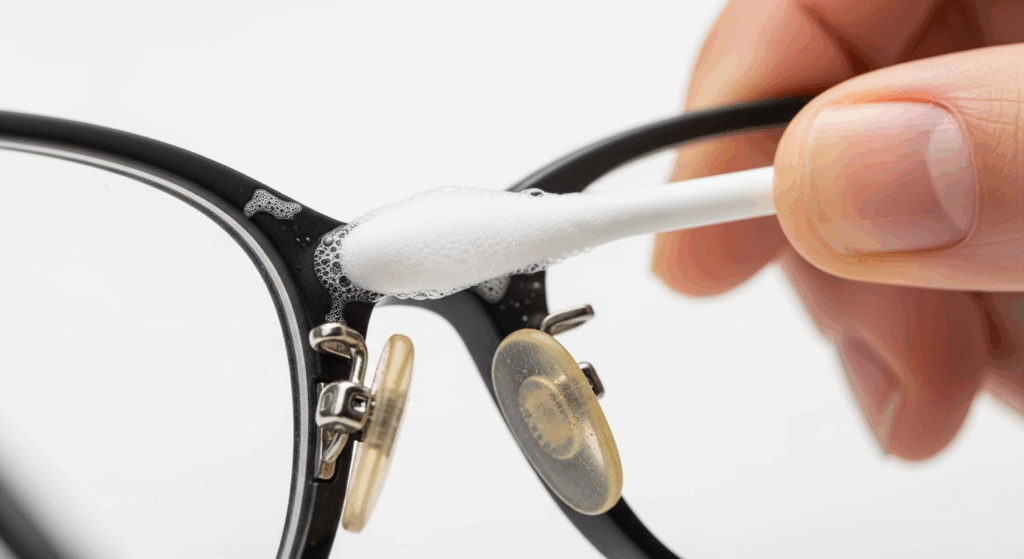
- For metal frames: a soft toothbrush + soapy water cleans dirt from nose pads and hinges. Rinse and dry.
- For acetate/plastic frames: same approach, avoid excessive heat or solvents.
- For stubborn gunk (cosmetics, sunscreen): soak in soapy water for a few minutes then gently brush with a soft toothbrush or cotton swab.
Travel and everyday care: what to carry
- Small microfiber cloth (folded in a case)
- Small bottle of lens cleaner or travel lens wipes
- A hard glasses case — always store glasses in the case when not wearing them
- Avoid leaving glasses in hot cars or under direct sunlight for long periods
A good travel kit is like a first-aid kit for your glasses.
When to see your optician
- If you notice permanent streaks that won’t buff out (could be scratches)
- If anti-reflective coating seems to flake or peel
- If frames loosen or screws come out — a quick service at the optical shop fixes fit and alignment
- If lens cleanliness is unusually poor after repeated careful cleaning — consult the lab
We often tell patients: small problems are easy to fix. Don’t wait until frames are bent or coatings fail.
Expert tips and tricks
- Use two-stage cleaning: rinse first, then soap — always.
- Microfiber care: wash cloths regularly in warm water (no fabric softener). Fabric softener leaves a film.
- Dish soap choice: choose a plain, lotion-free soap — no moisturizers or grit.
- Anti-fog: a tiny dab of dish soap spread thin and buffed can act as a simple anti-fog — but don’t overdo it; it can leave residue.
- Ultrasonic cleaners: optical shops and some home units can deep-clean frames and small parts — great for nose pads and hinges. Ask if your frames or lenses are suitable.
Quick checklist — do this after cleaning
- Inspect lenses for streaks or spots.
- If streaks remain, re-wash and use a fresh microfiber cloth.
- Tighten loose screws if you have a small screwdriver (or get an optician to do it).
- Store in a case, away from heat and chemicals.
Conclusion
Cleaning your eyeglasses is quick and simple when you follow a gentle, grit-first method. Rinse to remove debris, use a small drop of mild soap, rinse again, and dry with a clean microfiber cloth — that’s the golden rule. Keep a microfiber cloth and a travel wipe handy, avoid harsh chemicals and paper products, and treat coatings with a little respect. Do that, and your lenses will stay clearer longer — which means better vision and fewer headaches. We get asked all the time: “Is it really that simple?” Yep — it is.
